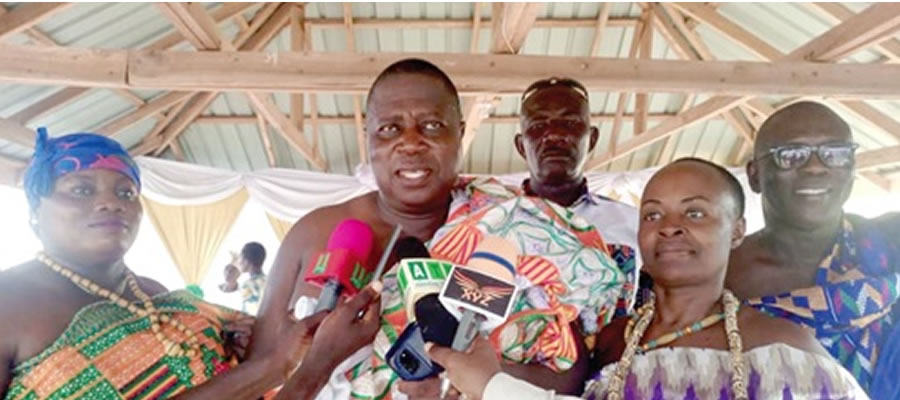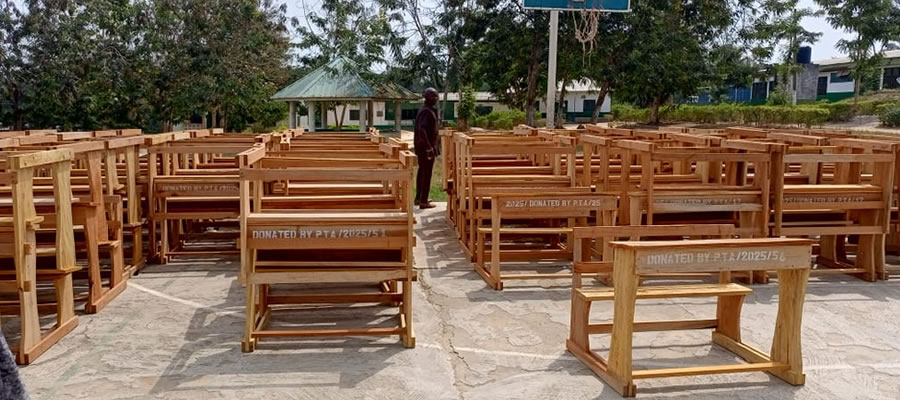

HEALTH CARE
A healthy population is an asset for increased productivity economic growth and development. Among the factors that promote good health are balanced diet, good sanitation, health facilities like hospitals, clinics, health centres/ health posts and qualified personnel like doctors, nurses and other paramedics.
Infrastructure Statistics available from Assin South District Health Management Team shows that the District has no hospital. However, the District has four (4) Health Centres, two (2) Health post/clinics and eleven (14) CHPS zones as shown in the table 20 below.
Table 21: Health facilities and their location in the District
Personnel
In terms of health personnel, the District has:
One (1) Public Health Practitioner,
Three (3) Medical Assistants,
Four (4) Disease control officers,
Thirty-two (32) nurses made up of, two (2) Public Health nurses, four (4) General Nurses,
Eighteen (18) community health nurse,
Eight (8) Midwives,
One hundred and six (106) TBAS,
Ten 10 Health aides,
One 1 Dispensary technician and
Fifteen (15) supporting staff.
The above statistics puts the Doctor patient ratio at zero.
PHYSICAL ACCESSIBILITY OF HEALTH
Going by the Ghana Health Services and Ministry of Health policy that every community should ideally be within 8 kilometres from a health facility or worst a maximum distance of 10 kilometres or one (1) health facility per Area Council then one can say that:
· Health facilities in the District inadequate and unevenly distributed and that about 60% of the population have to travel more than 10km to access a health facility.
To address the unevenly distribution of health facilities it is recommended that the following communities be provided with CHPS compounds
(1).Nuanua No.2.
(2). Krokoso
With no hospital in the District, the referral hospitals are in Assin Foso, Asikuma, Abura Dunkwa or Cape Coast Hospital. However, according to the 2010 PHC almost 100% of the population have access to traditional health facilities within the 10km distance. In view of their accessibility, the Traditional Medical practitioners could be trained to administer orthodox medicine
MAJOR DISEASES
The major diseases reported in the District are malaria, diarrhoea, Onchoceciasis, anaemia, malnutrition, typhoid, skin diseases, hernia and respiratory diseases. The table below re-enforces the above.
Table 22: Some Vital Health Information in the District
Source: GHS-ASDA 2016
CHILD SURVIVAL
According to the 2010 PHC, about 81% of children born to women of child bearing ages (15-49) in the District do survive. This high number might be due to:
1. The presence of TBAs
2. Improvement in the health delivery services
In an attempt to address some of the above problems:
1. The District is sponsoring some nursing trainees.
2. School leavers are being recruited into the health centres under National Youth Employment Programme as Health Aid Assistants.
3. The DA and the MP are constructing CHPS Compounds at various locations in the communities in the District.
NATIONAL HEALTH INSURANCE SCHEME
Under the National Health Insurance scheme (NHIS), 2,735 people have been registered. Available statistics also shows that 2,245 people have benefited from the scheme. The problems confronting the scheme are:
· Inadequate logistics
· Low coverage,
· insufficient sensitization
· Over politicization of the scheme.
HIV/AIDS/STDs
The number of HIV/AIDS reported cases in the District as indicated in Table 17 is on the increase. It increased from 52 cases in 2010, to 53 and 88 cases in 2011 and 2012 respectively. The trend also shows that women are more vulnerable to the disease than men. In fact, the rate (14.2%) at which women are contracting the disease is so alarming that it calls for urgent attention.
Available information from HIV/AIDS, ASDA Focal Person, also suggests that the disease is prevalent among the youth (apprentices, seamstress and hairdressers).
Table 23: HIV/AIDS Reported Case in Assin South District (2016)
Source: ASDA, GHS 2016
Fig 9: HIV/AIDS Reported Cases
Even though HIV / AIDS disease is not among the top 5 diseases, several factors tend to promote its spread in the District.
1. The communities along the main Cape Coast – Kumasi trunk road are apparently the ‘rest stop’ for the long distance vehicle drivers.
2. People indulged in unprotected and multiple sexual relationships.
3. Low level of HIV/AIDS sensitization.
4. High incidence of poverty.
This calls for measure to increase education/awareness creation for behavioural change care for people living with AIDS promoting the use of condoms, attitudinal change, and poverty Reduction through employment creation.
CHILD LABOUR
Available statistics show that Assin South ranks first as the District with the highest number of child labourers in the region. Accordingly, about 5.2% of children aged 7-14 instead of being in school are engaged in one form of activity or the other.
With the Capitation Grant, and Ghana School Feeding Programme initiated by the government and the establishment of Micro- Financing Schemes for especially women, it is hoped that it will compel them to pull their children from the job market, and rather send them to school.
INFORMATION AND COMMUNICATION TECHNOLOGY (ICT)
Information and Communication Technology (ICT) is a vital component for development especially in today’s world. It refers to the application of computer technology to address basic problems relating to our daily lives.
The District currently has a very low level of ICT training among its populace, this is evident in the fact that most of the communities in the District have no access to electricity and hence no access to computers. It is therefore a major developmental problem for the District to try and increase its ICT base so as to be able to catch up with the rest of the world.
Currently, the District with support from the Ghana Investment fund for Electronic Communication (GIFC) has put up three (3) Community Information Centres (CICs) located at Assin Manso, Nsuaem/Kyekyewere and Nyankumasi/Ahenkro. These facilities have been set-up to train as well as provide ICT services to the general public. The structures have been built and efforts are being made to equip these facilities to promote development in the District. It is the assembly’s desire to promote the use of ICT in schools and major communities as time goes on.
Nevertheless, due to the low coverage of mobile phone cellular network coverage in the District, it makes it difficult for the ICT equipment’s to function adequately and efficiently. This retards development since communication among individuals and entities are slow.
Date Created : 10/11/2024 12:00:00 AM











 facebook
facebook
 twitter
twitter
 Youtube
Youtube
 +233 593 831 280
+233 593 831 280 0800 430 430
0800 430 430 GPS: GE-231-4383
GPS: GE-231-4383 info@ghanadistricts.com
info@ghanadistricts.com Box GP1044, Accra, Ghana
Box GP1044, Accra, Ghana